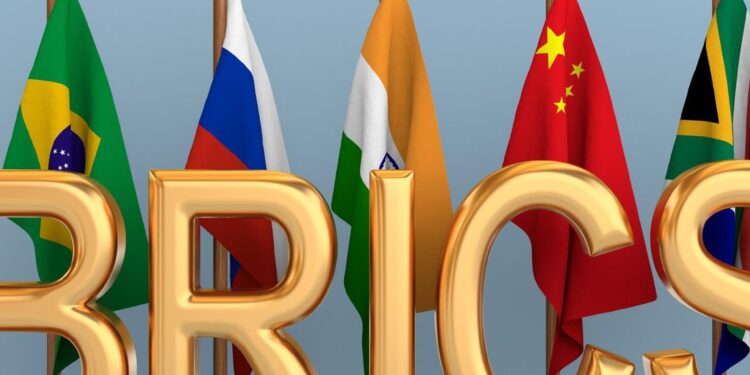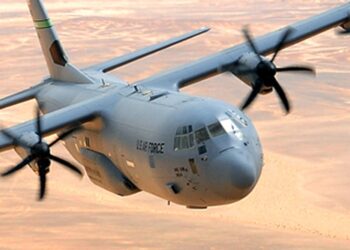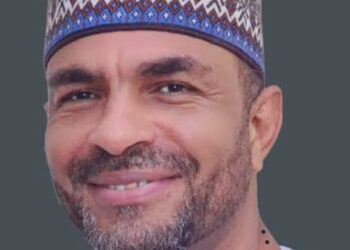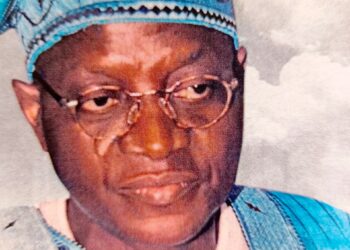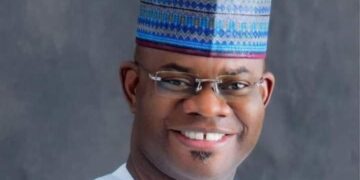SIGNIFICANCE OF BRICS AND ITS EXPANSION
By Lawal Sale
BRICS is a bloc of some world’s leading emerging economies. BRICS is coined from an acronym for Brazil (B), Russia (R), India (I), China (C) and South Africa (S).
The coinage was initially used in 2001 by the then Goldman Sachs chief economist Jim O’Neil in a research to identify fast-growing economies that would shape the future of global economy.
The group started as BRIC without South Africa, but in 2010, the “S” was added, representing South Africa as a new member from Africa and a major economy in the global south.
In fact, South Africa was finally considered during the first summit of the bloc in 2010, which was hosted by Russia.
The BRICS bloc operates by consensus and all the five original members are also members of the Group of 20 (G20).
Some cardinal objectives of BRICS are to stimulate regional development, improve multilateral trading systems, while ensuring better representation of emerging economies, energy efficiency and climate control.
The fundamental goals are, however, aimed at promoting cooperation, dialogue and transparency in a proactive and pragmatic manner.
In the meantime, the priorities of the bloc are promoting multilateralism, inclusive world order and win-win cooperation for a peaceful and harmonious community with a shared future for mankind.
Available statistics indicate that the current 5 BRICS nations have a combined Gross Domestic Product (GDP) of about $27.6 trillion, with China grossing roughly 60 percent.
This is not strange, as China is the world’s second largest economy.
According to World of Statistics, by January 2024, China’s GDP will peak at $19.3 trillion, India $3.07 trillion, Brazil $2.08 trillion, Russia $2.06 trillion and South Africa $399 billion. In a nutshell, by 2030, BRICS countries are expected to contribute more than 50 percent of the global GDP.
In terms of population and land surface, the current BRICS countries have a combined population of over 3 billion people — about 45 percent of world population — and more than 26 per cent of its land surface.
From all indications, the mainspring of the influence of BRICS on the international arena is the bloc’s expanding economic strength and its relevance as one of the key driving engines of global economic development.
It is pertinent to note that one of the major achievements of BRICS was the establishment of the New Development Bank (NDB) in 2015 and the rationale behind the creation of the Bank was the need to offer support to BRICS countries and other developing countries for infrastructure development and financing for balanced growth and sustainable development.
The initial share capital of the NDB was $100 billion.
Lately, there has been trending speculations about plans by the NDB to introduce its own currency but the current president of the bank, Dilma Rousseff, debunked the rumour and reiterated that bank had no such plans.
Rousseff unequivocally emphasized that members are free to trade and offer finance to fellow members in their own currencies.
The intrinsic idea behind this strategy was to reduce the perceptible over-reliance on the U.S. Dollar and to promote a multi-polar international financial system.
The NDB president, in a chat with Financial Times recently, expatiated that the bank recently provided $33 billion loan for infrastructure and sustainable development projects, while incorporating non-BRICS nations — Egypt, Bangladesh and the United Arab Emirates — into the bank as additional members, with Uruguay undergoing the final stages of admission.
Besides, Rousseff said that lending in local currency would allow borrowers in member countries to avoid exchange rate risks and variations in the U.S. interest rates.
Her words: “Local currencies are not alternatives to the dollar – they’re alternatives to a system.”
So far, the system has been unipolar…it’s going be substituted by a more multipolar system.”
The NDB has also tried to distinguish itself from the World Bank and the International Monetary Fund (IMF) by not slamming political conditions on its loans.
Other significant development initiatives of the bloc include the BRICS Contingent Reserve Arrangement, the BRICS Payment System, the BRICS Joint Statistical Publication and the BRICS Basket Reserve Currency.
Since its inception, BRICS has organized meetings on a rotational basis, with member countries taking their turns.
A couple of weeks ago, the 15th BRICS Summit took place in Johannesburg, South Africa, with President Cyril Ramaphosa as the host.
Other leaders at the event included Lula Da Silva of Brazil, Narendra Modi of India and Xi Jinping of China while Russian President Vladimir Putin was represented by his foreign minister.
The most significant issue discussed during the summit was the expansion of the bloc but the focus was also on issues of global geopolitics, trade, financing and infrastructure development.
As the leaders took their turns to make their remarks, Chinese President Xi noted that what the people of the various countries were not yearning for a “new cold war” or a “small exclusive bloc” but an open, inclusive, clean and beautiful world that would enjoy lasting peace, universal security and common prosperity.
On his part, Russian President Putin, who addressed the gathering virtually, reiterated that the glaring predominance of the U.S. dollar in the world economy was gradually coming to an end, as more and more countries were now looking for an alternative to the dollar in international transactions.
President Lula Da Silva of Brazil, however, debunked some viewpoints in certain quarters that BRICS was a rival to G7 or G20 blocs, arguing that BRICS was not a rival to any group or association but a group of emerging economies.
It is worthy to note that at the end of the Johannesburg BRICS Summit, the leaders of the bloc endorsed the application of six countries for BRICS membership by January 2024.
The countries invited to join BRICS are Argentina, Egypt, Ethiopia, Iran, Saudi Arabia and United Arab Emirates.
Meanwhile, countries on the waiting list for invitation to join in the future include applicants like Nigeria, Algeria, Bangladesh, Belarus, Bahrain, Bolivia, Cuba, Honduras, Indonesia, Kazakhstan, Kuwait, Mexico, Morocco, Senegal, Thailand, Venezuela and Vietnam.
There is no doubt that with the inclusion of the six nations and the future consideration of other applicants, the influence of the future BRICS +(Plus) will enhance its growth to a stronger coalition of developing nations, which will better put the interests of the Global South on the world’s agenda.
More than 40 countries had expressed interest to join BRICS but only 23 countries had formally applied for membership and as earlier mentioned, six out of the 23 countries have been cleared to join the bloc.
– Sale is an Abuja-based Global Affairs Analyst (lawalmaida1@yahoo.com)
(vitalnewsngr.com)


